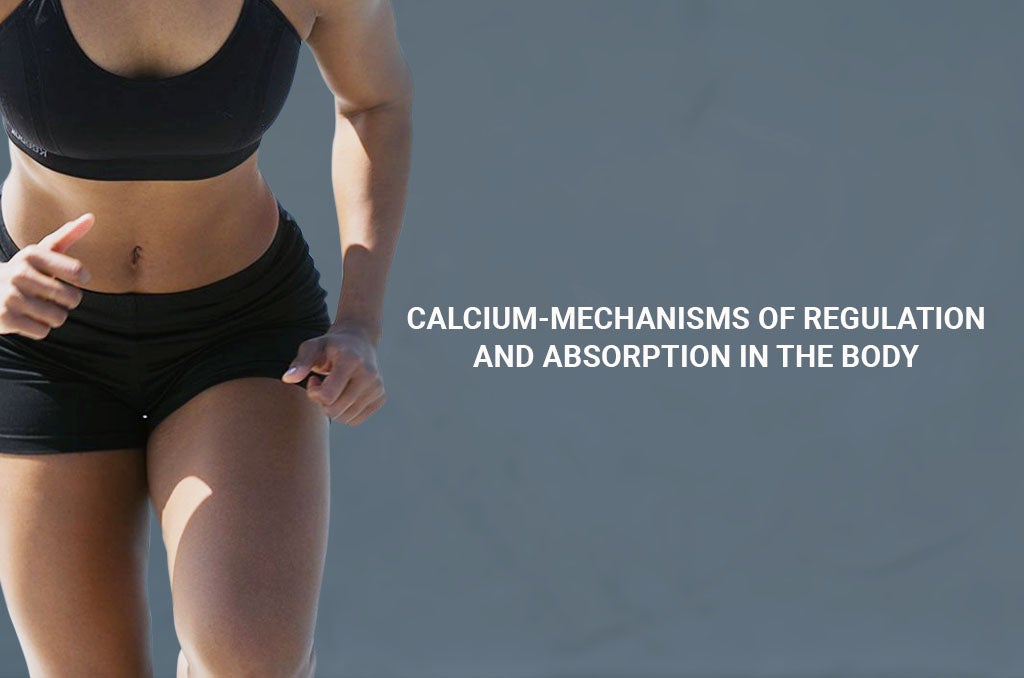Our bones are the largest reservoirs of calcium, harboring most of the calcium in our bodies (about 99%) in the form of calcium hydroxyapatite. Calcium is also found in teeth, the circulatory system, extracellular fluid, muscles and other tissues. It plays crucial roles such as regulating the tone of the blood vessels, production of hormones, intracellular signaling (communication of information within body cells), muscle contraction, nerve communication, among other functions.
Because of this critical role played by calcium, its normal blood concentration is tightly controlled by the body to a level of about 2.15 to 2.55mmol/L. This control is achieved via two major biochemicals - vitamin D3 and parathyroid hormone (PTH) which control the absorption of calcium from the intestine, bones and kidneys as well as its excretion by the kidneys and the gastrointestinal tract. There is also calcitonin, a hormone which inhibits calcium release from bones, however to a lesser extent. It is this control that maintains the body’s normal calcium concentration via the balance of input and output.
However, disorders of calcium homeostasis may sometimes arise from a range of causes such as calcium deficiency in diet, malabsorption of calcium and vitamin D3, insufficiency or excess of PTH and vitamin D3, kidney damage, among other causes. These could result in diseases like osteomalacia, osteoporosis, hypocalcaemia, and hypercalcaemia, kidney stones, hypotension, heart dysfunction, tetany, seizures, and other diseases of calcium metabolism.
Depending on the underlying abnormality, various treatments exist which are targeted at different levels of calcium homeostasis (equilibrium).
ABSORPTION OF CALCIUM FROM DIETS AND FILTERED URINE
Calcium can be absorbed from the cells lining the intestines and kidneys via active (specialised calcium transport channels) and passive (diffusion) transport mechanisms and a number of factors could influence this. An understanding of these factors is important to enable the individual maximize their calcium intake.
FACTORS THAT INCREASE THE ABSORPTION OF CALCIUM
FACTORS THAT DECREASE THE ABSORPTION OF CALCIUM
REGULATION OF CALCIUM IN THE BODY
A portion of dietary calcium is absorbed through the intestine into the blood and from there, mostly into the bones and then soft tissues like the muscles, brain, nerves, etc. A given portion of the calcium circulates in the blood as the physiologically active free ionized calcium, while the rest are bound to plasma proteins. The aim of this is to maintain the right concentrations of calcium in the blood at any point in time to enable its optimal functioning.
To achieve this, the body regulates blood concentration of calcium within physiological range by eliminating excess calcium via the kidneys and intestines, while retaining only the needed amount. Two main hormones enable these organs to control calcium inflow and outflow from the extracellular fluid; the parathyroid hormone (PTH) and vitamin D3.
Parathyroid hormone is produced by the parathyroid gland while the physiologically active form of vitamin D3 is produced by the kidneys aided by PTH.
FUNCTIONS OF PARATHYROID HORMONE AND VITAMIN D3
The two hormones are synergistic. PTH enables calcium absorption from the kidneys and also stimulates the kidneys to produce vitamin D3. Both of these hormones act on the osteoclasts (cells that break down bone tissue to release the constituent minerals) to release calcium in times of low calcium concentrations.
Vitamin D3 in addition to regulating reabsorption of filtered calcium in urine, facilitates calcium absorption from the intestine. The ultimate result is that the body is able to take in more calcium from the diet, reabsorb more from the bones and urine in times of calcium need, while inhibiting these processes in times of calcium excess.
When the regulation of calcium fails to keep up with the body's needs, it results in hypocalcaemia (low calcium) or hypercalcaemia (calcium excess).
HYPERCALCAEMIA
HYPOCALCAEMIA
BODY’S RESPONSE TO LOW AND HIGH CALCIUM LEVELS
In times of low calcium, the parathyroid glands produce PTH which stimulates the osteoclasts to release calcium from the bones and into the circulation. PTH also stimulates the kidneys to absorb more calcium from filtered urine and produce more vitamin D3. Vitamin D3 in turn stimulates increased osteoclast activity and enhanced calcium absorption from the gut and kidneys. As calcium concentration rises to normal levels, the secretion of PTH and vitamin D3 is inhibited by a negative feedback mechanism.
In times of excessive calcium, the production of PTH and vitamin D3 are inhibited, resulting in inactivation of osteoclasts. Instead, osteoblasts (bone-building cells) are activated to incorporate the surplus calcium into the bones. In addition, there is reduced calcium absorption from the diet and kidney, these together ultimately leading to a reduction of the blood calcium concentration to normal levels.
When the body fails to produce these responses to blood calcium concentration, disease states result.






